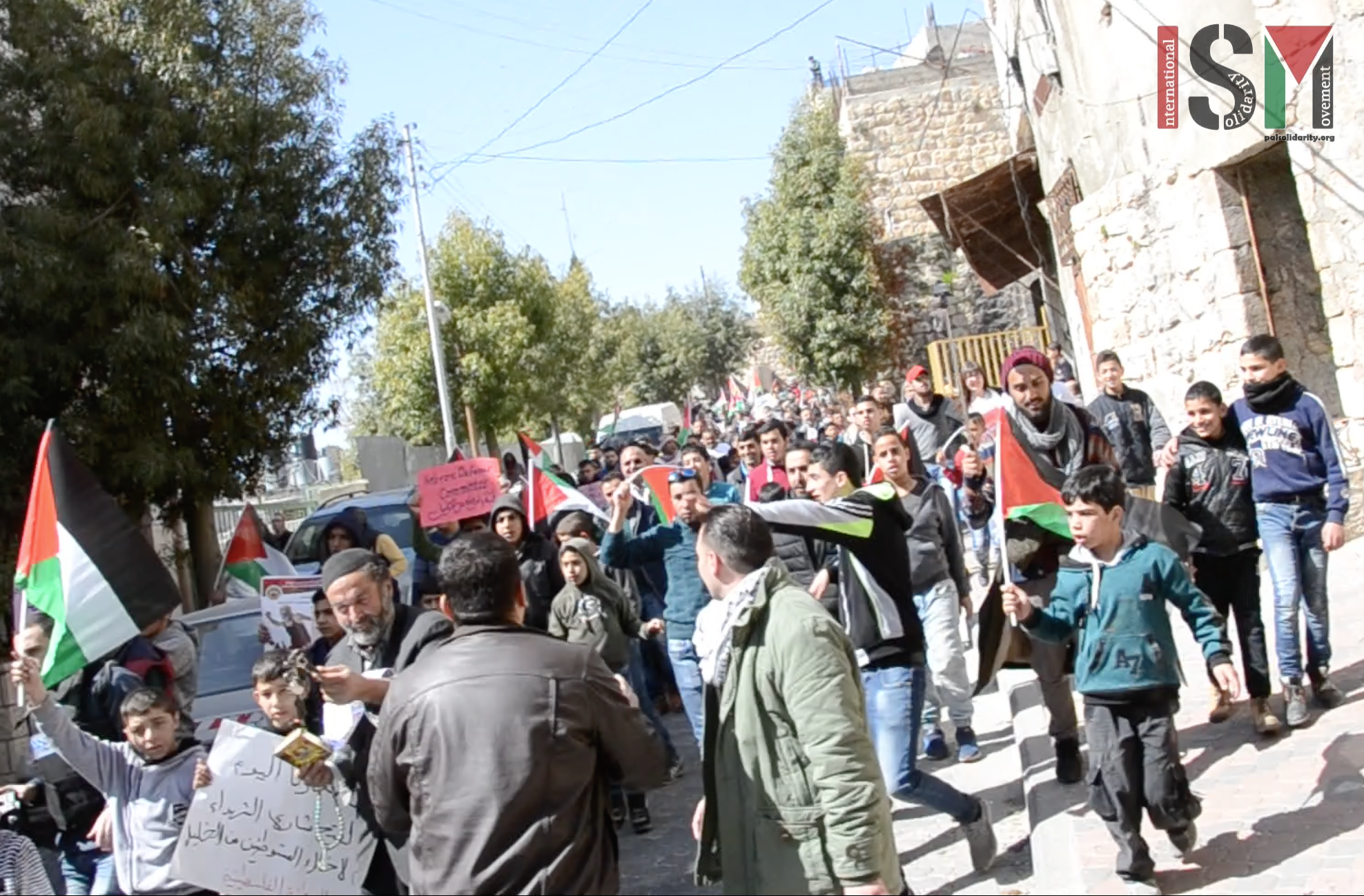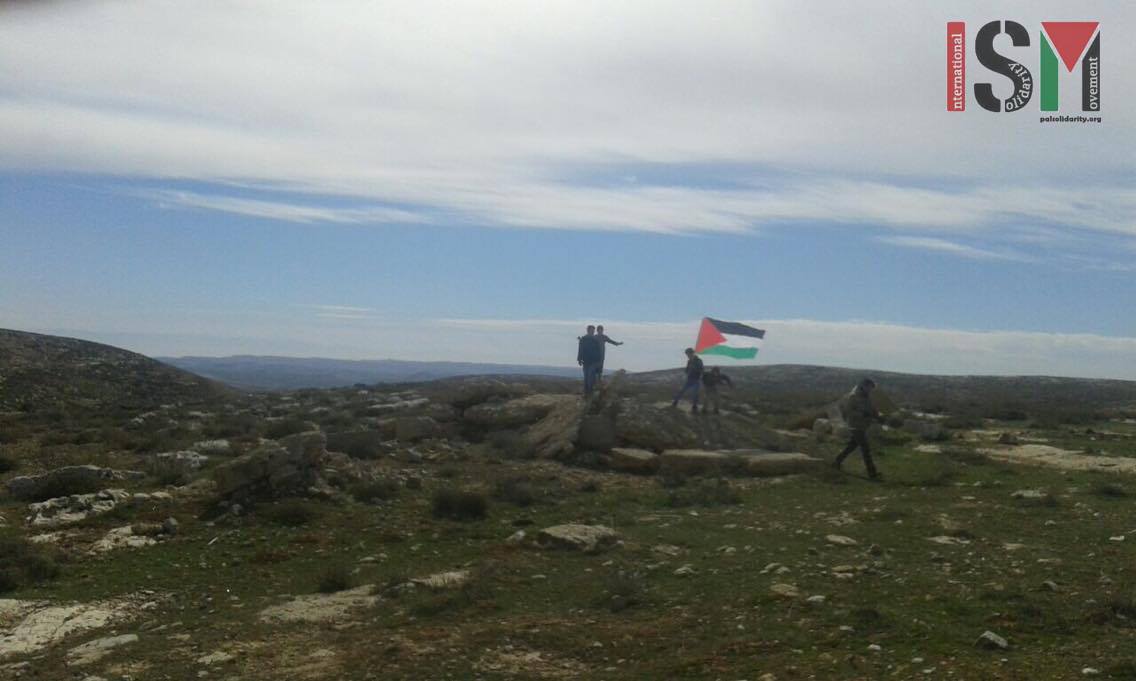Tag: Settlers
-
Susya faces demolition for the eighth time
27th February 2017 | International Solidarity Movement, al-Khalil team | Susya, occupied Palestine The village of Susya in the south Hebron hills faced complete demolition again yesterday as the Israeli court, and the villagers, waited for the Israeli government to announce its plan for demolition. The Israeli government asked the court for a 48 hour…
-
Israeli army attacks peaceful demonstration in Hebron and injures protesters : eye-witness accounts
24th February 2017 | International Solidarity Movement, al-Khalil team | Hebron, occupied Palestine On 24th February several hundred people joined together for a demonstration in al-Khalil (Hebron) in occupied Palestine. Palestinians, Israelis and international activists protested together against the occupation of Shuhada Street and Tel Rumeida in the heart of the city, closed by the military…
-
Non-violent action in al-tuwani
17th of February, 2017 | International Solidarity Movement, al-Khalil team | South Hebron Hills, Occupied Palestine Saturday 4th a group of villagers from Al Towani, South Hebron Hills, held a non-violent demonstration against settler violence and illegal settlement expansion, which affects their village. This non-violent demonstration was met with harassment from residents of the illegal out-post…


